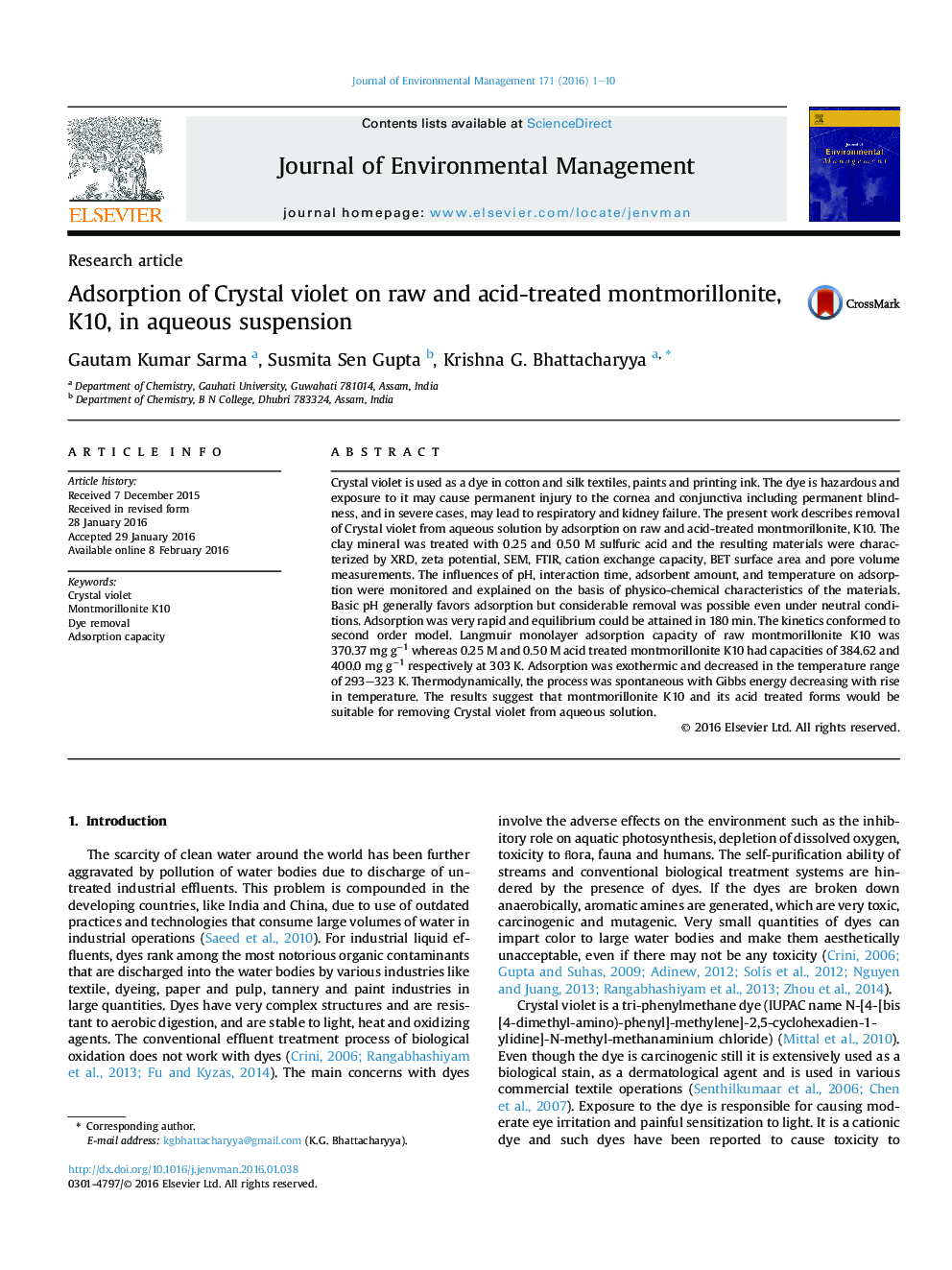| Article ID | Journal | Published Year | Pages | File Type |
|---|---|---|---|---|
| 1055291 | Journal of Environmental Management | 2016 | 10 Pages |
•Montmorillonite K10 was treated with 0.25 and 0.50 M sulfuric acid.•Acid-treatment successfully increased surface area and surface acidity.•The materials were used as Crystal violet adsorbents from aqueous solution.•Acid-treatment increased the adsorption capacity for crystal violet.•Montmorillonite K10 and its acid-treated forms have good potential as adsorbents.
Crystal violet is used as a dye in cotton and silk textiles, paints and printing ink. The dye is hazardous and exposure to it may cause permanent injury to the cornea and conjunctiva including permanent blindness, and in severe cases, may lead to respiratory and kidney failure. The present work describes removal of Crystal violet from aqueous solution by adsorption on raw and acid-treated montmorillonite, K10. The clay mineral was treated with 0.25 and 0.50 M sulfuric acid and the resulting materials were characterized by XRD, zeta potential, SEM, FTIR, cation exchange capacity, BET surface area and pore volume measurements. The influences of pH, interaction time, adsorbent amount, and temperature on adsorption were monitored and explained on the basis of physico-chemical characteristics of the materials. Basic pH generally favors adsorption but considerable removal was possible even under neutral conditions. Adsorption was very rapid and equilibrium could be attained in 180 min. The kinetics conformed to second order model. Langmuir monolayer adsorption capacity of raw montmorillonite K10 was 370.37 mg g−1 whereas 0.25 M and 0.50 M acid treated montmorillonite K10 had capacities of 384.62 and 400.0 mg g−1 respectively at 303 K. Adsorption was exothermic and decreased in the temperature range of 293–323 K. Thermodynamically, the process was spontaneous with Gibbs energy decreasing with rise in temperature. The results suggest that montmorillonite K10 and its acid treated forms would be suitable for removing Crystal violet from aqueous solution.
